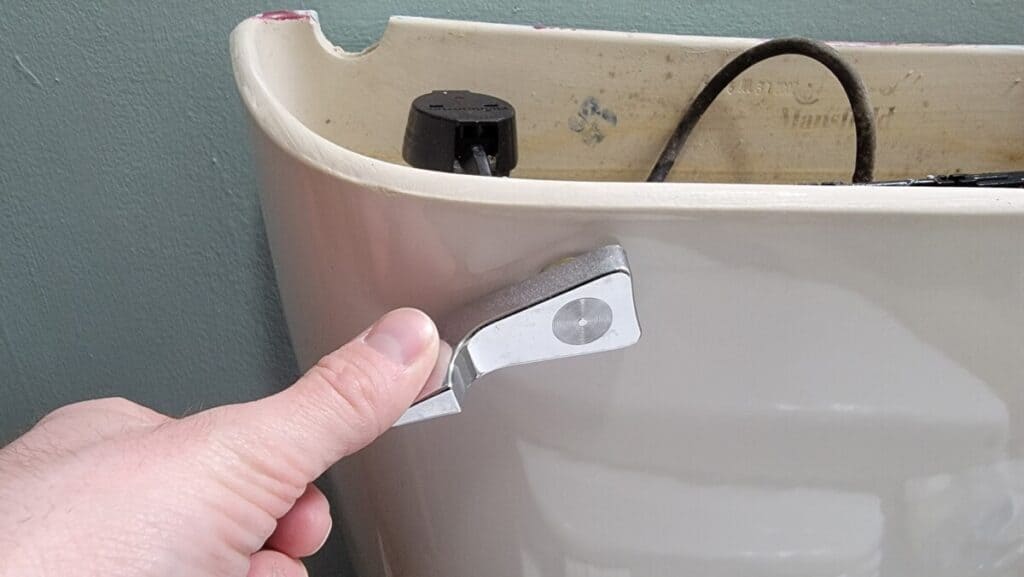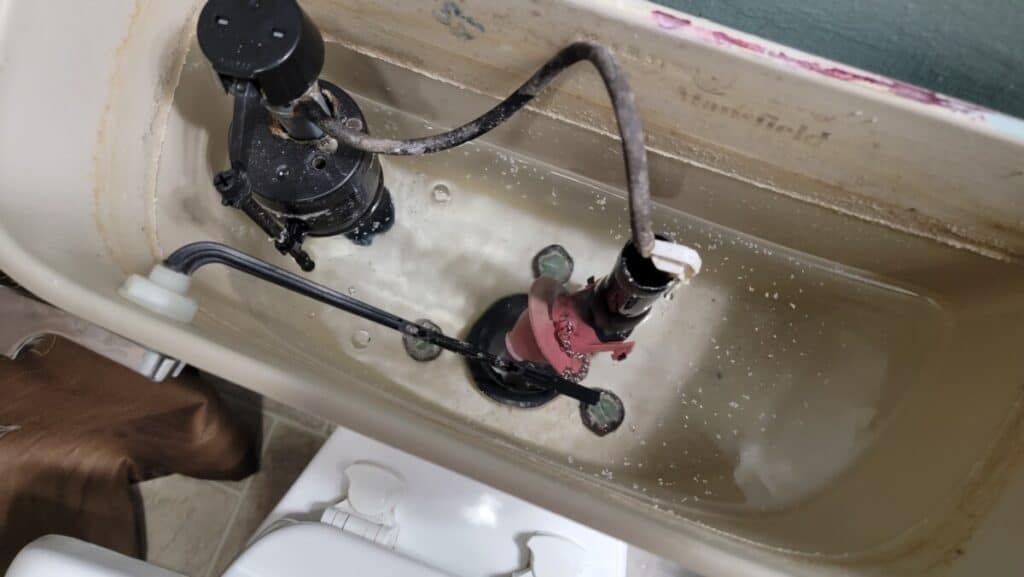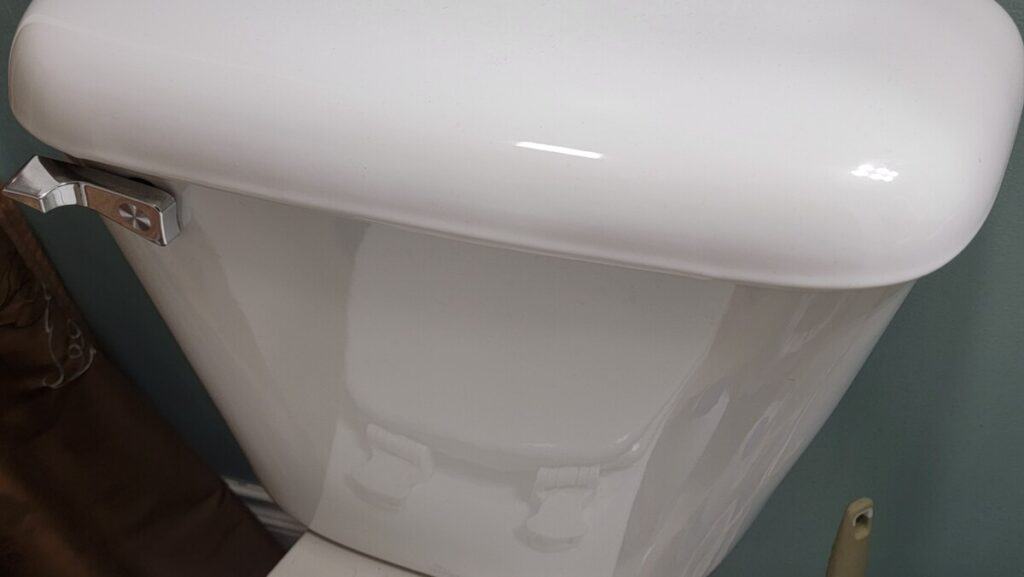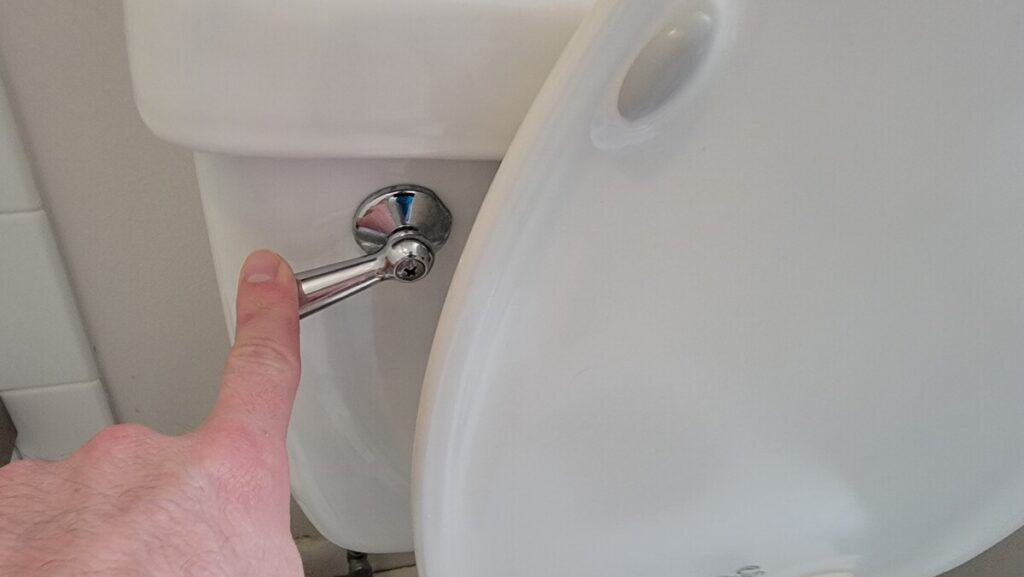Toilet Sounds like a Jackhammer: How to Fix
A peaceful home is a haven for relaxation and comfort, but when your toilet suddenly starts making a racket that sounds like a jackhammer, it can disrupt your tranquility and leave you puzzled.
If you’re wondering what’s causing this noisy issue and how to fix it, you’ve come to the right place. When I worked in maintenance at a property equipped with over 250 toilets, I faced this very problem on numerous occasions over a span of 10 years.
In this article, we’ll explore the primary causes behind this unwelcome disturbance and provide guidance on how to address the problem. By understanding the reasons behind the noise, you’ll be better equipped to resolve the issue and restore serenity to your home.
Damaged or Dirty Diaphragm in the Fill Valve:
One of the most common reasons for a toilet sounding like a jackhammer is a damaged diaphragm in the fill valve or a diaphragm that’s covered with mineral deposits.
The fill valve is responsible for refilling the toilet tank after each flush, and the diaphragm is a critical component that helps regulate the flow of water. When the diaphragm is damaged or covered in mineral deposits, it can’t create a proper seal, leading to constant leaking and stopping of water flow.
This erratic flow of water can cause what’s known as the water hammer effect in the pipes. The water hammer effect occurs when the momentum of the water suddenly stops against bends in the pipe, causing the pipes to shake and create the jackhammer-like noise you’re hearing.
The noise can also be more localized and confined to the valve itself as the water sputters past it like you’re making a rolling “R” with your tongue.

To clean the fill valve, check out my article here. To replace it, keep reading. Before you replace anything, be sure to rule out the other possibilities first!
How to Replace a Fill Valve:
- Turn off the water supply to the toilet by turning the shut-off valve clockwise.
- Flush the toilet to empty the tank and remove any remaining water with a sponge or towel.
- Unscrew the water supply line from the bottom of the fill valve.
- Remove the old fill valve by unscrewing the locknut from the base of the valve, which is located underneath the toilet tank. Lift the valve out of the tank.
- Install the new fill valve by placing it into the tank hole and securing it with the locknut.
- Adjust the height of the fill valve according to the manufacturer’s instructions to ensure the proper water level in the tank.
- Attach the refill tube from the fill valve to the overflow tube in the toilet tank.
- Reconnect the water supply line to the new fill valve.
- Turn on the water supply, and allow the tank to fill. Check for any leaks and proper water level. Adjust the fill valve as necessary.

Compromised Water Supply Valve:
Another primary reason your toilet might sound like a jackhammer is a compromised water supply valve that leads to the toilet.
Oftentimes, it’s just due to the valve being only partially open, and not open all the way. Turn the valve counterclockwise to make sure it’s fully open.
This issue can also arise if the rubber washer inside the valve becomes loose inside the valve, allowing it to move around when it shouldn’t. The starting and stopping of water as it goes through the valve can cause the water hammer effect, leading to the noisy disturbance you’re experiencing.
Try closing the valve and fully opening it several times to see if the issue resolves itself. Sometimes, this is all it takes. If not, you may need to replace the water supply valve, but I would hold off on that until you’ve ruled out every other issue.
Waterlogged Water Hammer Arrestors:
In some cases, air chambers installed in your plumbing system to help prevent water hammer noises can become waterlogged. The air chambers that I’m speaking of are the antiquated ones where it’s simply a capped pipe that is perpendicular to your normal plumbing. Actual water hammer arrestors will have a float or piston inside and will not have this problem.
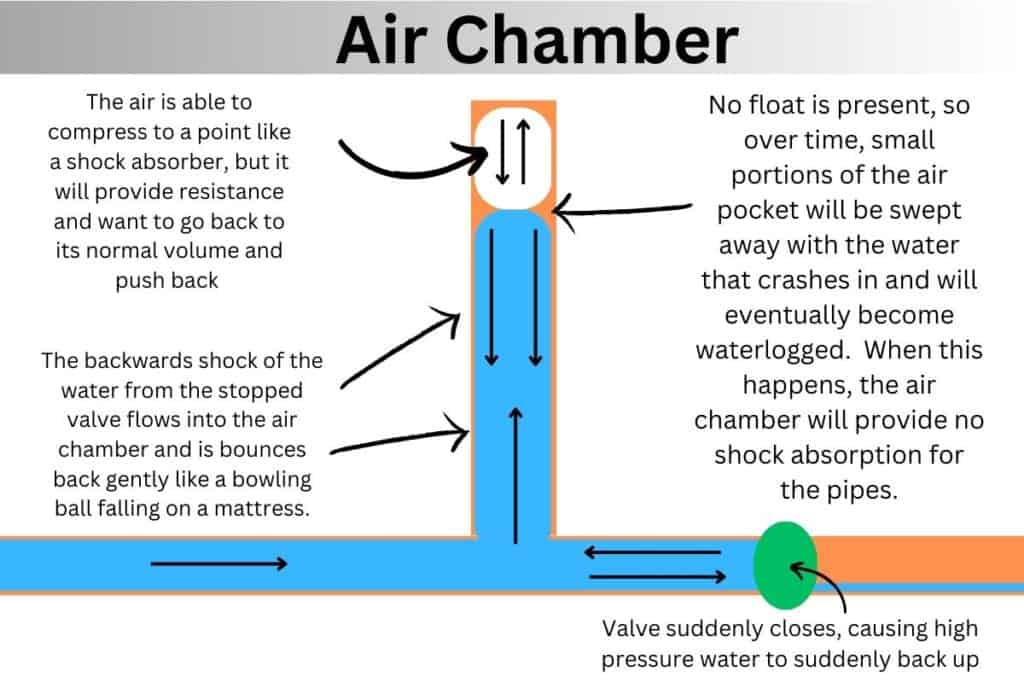
Inside the capped pipe is supposed to be air. That air will act as a shock absorber for the pressure created in the pipe as the running water’s momentum is suddenly stopped by a closing valve. The air will compress, and this will dampen the water hammer effect. If, however, the capped pipe becomes full of water, then there will no longer be a dampening effect on the water hammer because water will not compress.
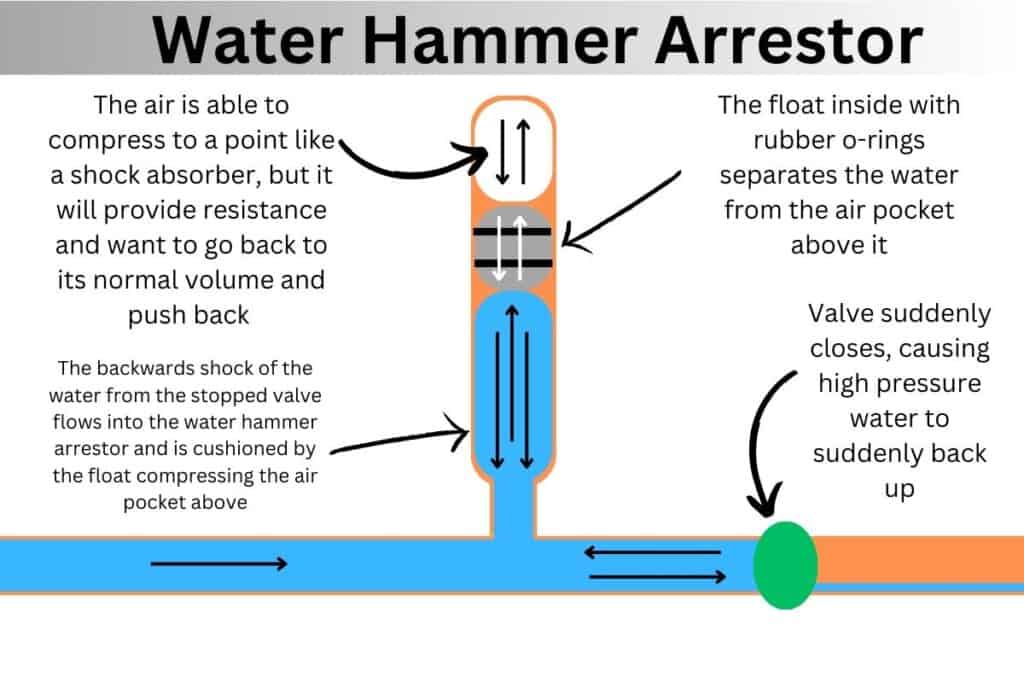
When this occurs, they lose their effectiveness, and the water hammer effect can reappear. Checking and draining waterlogged water hammer arrestors can help mitigate the issue.
To fix this issue, do the following:
- Turn off the water supply to the house at the main shut-off valve.
- Open the highest and lowest faucets in the house to drain the water from the pipes and arrestors.
- Leave the faucets open for a few minutes to ensure all the water has drained.
- Close the faucets, and turn on the water supply to the house.
- Consider upgrading to water hammer arrestors with an internal diaphragm or piston, which are less likely to become waterlogged and require less maintenance.
Unsecured Pipes:
If your pipes aren’t properly secured with straps and brackets, they can also be prone to shaking and making noise when water flows through them. Ensuring that all pipes are correctly secured can help reduce the chances of your toilet sounding like a jackhammer.
Final Takeaways
A toilet that sounds like a jackhammer can be both annoying and disruptive, but understanding the primary causes behind the noise can help you address the issue effectively.
By checking the diaphragm in your fill valve, inspecting your water supply valve, and considering other factors like water hammer arrestors and pipe security, you can take steps to eliminate the noise and restore peace and quiet to your home.
Now, if you think that your toilet sounds more like a jet engine or foghorn, you can check out my other article here to diagnose and fix your issue.



